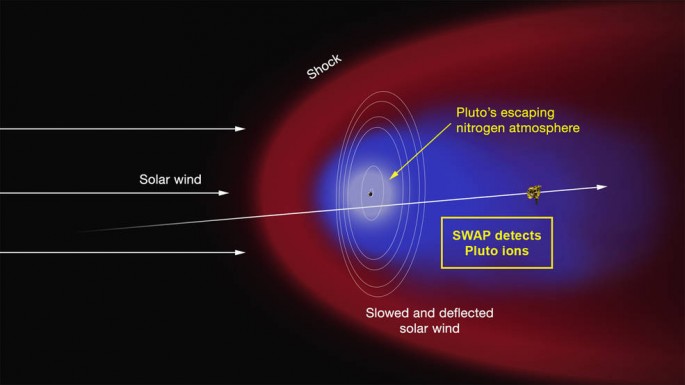After NASA's New Horizons probe's first ever flyby of Pluto last week, a stream of data and images are slowly unraveling the never before seen Pluto system's geological features and terrain where now, scientists are confirming that the dwarf planet apparently leaves a thin trail of gas behind the icy world.
This tail of gas being emitted by the dwarf planet at 500 tons of nitrogen per hour. Another planet that has a similar process is Mars, where it is also releasing material at a much slower rate of every one to 60 minutes. This gas trail from Pluto spans 1,000 miles behind the frozen world which could be the result of a cold, dense ionized gas being stripped away by solar wind.
After travelling across the solar system for almost 10 years and 3 billion miles, the New Horizons spacecraft arrived near the Pluto system in early July where its terrain and surface became more visible for the first time ever. Pluto's interesting features include a bizarre heart shaped region on its southern hemisphere, icy mountain ranges and a surprising craterless surface.
This heart shaped region has already been dubbed by scientists as the "Tombaugh Regio" after the astronomer who discovered Pluto in 1930, Clyde Tombaugh. The probe revealed that the heart region was abundant in carbon monoxide where this is apparently the only region on the dwarf planet that is rich in carbon monoxide deposits.
According to New Horizons lead investigator, Jeff Moore, this landscape is truly amazing and astounding where some regions possess no craters at all meaning, geological processes are still forming the planet.
Mission scientists and astronomers were surprised since they were not expecting any of these features, Moore adds that the terrain is not very easy to explain since they are vast, young icy plains that are virtually craterless, exceeding all Pluto flyby expectations. Moore is also the head for the Geology, Geophysics and Imaging Team (GGI) for the New Horizons mission located at The Ames Research Center




























